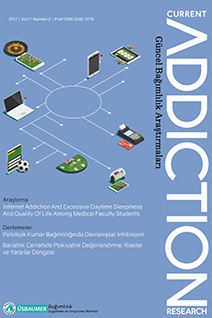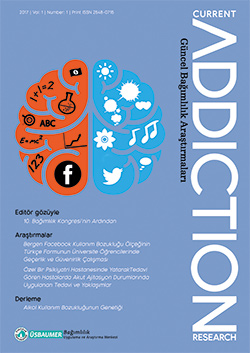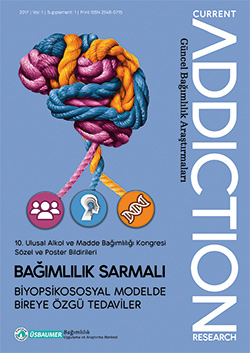Years
2024
2023
2022
2021
2020
2019
2018
2017
Categories
Authors
- ALEJANDRO BORREGO-RUIZ (1)
- AYŞEGÜL DUMAN (1)
- Ahmet Tamer AKER (1)
- Ahmet Yılmaz (1)
- Ahmet Üzer (1)
- Ali Yasin Kafes (1)
- Ali Yücel GÜLER (1)
- Alptekin ÇETİN (1)
- Alptekin Çetin (1)
- Altunışık Toplu Sibel (1)
- Aslı Enez Darçın (1)
- Aslı Kayacan (1)
- Aslı Zeynep Başabak Bhais (1)
- Aslıhan Polat (1)
- Aybüke Kaplan (1)
- Ayşegül Tosuner (1)
- Beyza Yaz (1)
- Birgul Kekliltepe (1)
- Birgül CUMURCU Hatice (1)
- Birgül Cumurcu Hatice (1)
- Bolat Kaya Özlem (1)
- Burcu YÜCETÜRK (1)
- Bülent COŞKUN (1)
- Caner ASLAN (1)
- Cemal Onur NOYAN (3)
- Cemal Onur Noyan (4)
- Ceren GÜNGÖR (1)
- Ceyda ŞİŞMAN ÜNLÜ (1)
- Ceylan Ergül Arslan (2)
- Cihat Paltun Salih (1)
- DURMUŞ ELİF (1)
- Davut Genç (1)
- Deniz Doğan (1)
- Deniz Eryılmaz (1)
- Derya Gündüz Hoşgör (1)
- Didem Beşikçi Keleş (1)
- Duygu KILIÇ ÖZTAN (1)
- EMLU HAKAN (1)
- Eda Deligöz (1)
- Ekin Sönmez Güngör (1)
- Elif Mutlu (1)
- Erkal ERZİNCAN (1)
- Erkal Erzincan (2)
- Erol Göka (1)
- Fagan Zakirov (1)
- Fatma Betül Esen (1)
- Fatma Eren (2)
- Feyza ÇELİK (1)
- Filiz Özsoy (1)
- FİDAN ENİSE KÜBRA (1)
- Gul Eryılmaz (1)
- Gökben Hızlı Sayar (3)
- Gül ERYILMAZ (4)
- Gül Eryılmaz (2)
- Gürler GÜZ (1)
- Gürler Güz (1)
- HANDE TUĞÇE DEMİRCİ (1)
- HATİCE OKSAL (1)
- Habib Erensoy (1)
- Hasan Kaya (4)
- Hasan Mervan Aytaç (1)
- Hatice Turan (2)
- Hatice Özyıldız Güz (1)
- Haydar Hoşgör (1)
- Hüseyin Ünübol (2)
- HİLAL ÇERKEZOĞLU (1)
- Hızlı Sayar Gökben (1)
- Işıl Gogcegoz (2)
- Işıl GÖĞCEGÖZ (1)
- Işıl Göğcegöz (2)
- KABA AYŞE (1)
- KABA FATİH (1)
- KARABURUN MERVE (1)
- Lütfiye Nur Akkoç Arabacı (1)
- Melike Yerebakan Tüzer (1)
- Merve Metin (1)
- Meryem Zeynep Uğurlu (1)
- Mine Ergelen (1)
- Murat Yalçın (1)
- Mustafa AKAN (1)
- Mustafa Akan (1)
- Müberra Kulu (1)
- Nermin GÜNDÜZ (2)
- Nermin Gündüz (2)
- Nesrin Dilbaz (5)
- Nevzat Tarhan (1)
- Nilüfer SAATCİOĞLU TINKIR (2)
- Nisanur Sarıgül (1)
- Nuran Korkmaz (1)
- Onur Gökçen (1)
- Rüstem Mustafaoğlu (1)
- SALİH GÜLEN (1)
- Salih Cihat Paltun (1)
- Sedef KOÇ BAL (1)
- Selami Ülker (1)
- Sema AKKOYUN (1)
- Serdar Nurmedov (2)
- Sever Yıldırım (1)
- Simge ALEVSAÇANLAR CÜCÜ (2)
- Sümeyra Bilgiç (1)
- Tijen Acar (1)
- Tijen ŞENGEZER (1)
- Tijen Şengezer (1)
- Tonguç Demir Berkol (1)
- Tuba Öcek Baş (1)
- Tuğba Yılmaz (1)
- Türker Tekin Ergüzel (1)
- Yasin Hasan Balcıoğlu (1)
- Zakirov Fagan (1)
- Zehra Arıkan (1)
- Zeynep Ülke (1)
- Zeynep Şahin (1)
- Zühal Albayrak (1)
- Çağrı Yalçın Çınar (1)
- Çelik Hüseyin (1)
- Çetin Alptekin (1)
- ÖMER BÜBER (1)
- ÖZKAN EZGİ (1)
- Özge Nur Kutluer (1)
- Özge Timur (1)
- Özlem Bolat Kaya (1)
- İrem Teke Bulut (1)
- Şafak Yalçın Şahiner (1)
- Şule DOYAROĞLU (1)
ARTICLES
Review Article
Ali Yasin Kafes,Selami Ülker,Gökben Hızlı Sayar
2018, 2(2), s:54-58
Food addiction has become a subject of increasing interest recently, particularly in societies where the prevalence of obesity is increasing. In individuals consuming excessive carbohydrates, it is suggested that the behavior of consuming these foods is transformed into a kind of addiction, and it is reported that the attitudes observed in these individuals can be common with the basic symptoms that are constantly observed in substance addiction. The suggested dysfunction of reward system which proposed to be related with food addiction tried to be supported by clinical and experimental studies. In this review, food addiction will be defined, and clinical overlaps, probable etiologic factors and treatment options will be discussed.
Review Article
Gül Eryılmaz,Işıl Göğcegöz
2018, 2(2), s:59-61
Pathological gambling is a mental disorder characterized that might cause significant decrements in social, vocational and family life. In this report, addictive gambling behavior, which may be called secondary or iatrogenic, has been reviewed.
Case Report
Gambling Disorder Following Bariatric Surgery
Gül Eryılmaz,Cemal Onur Noyan
2018, 2(2), s:62-63
Pathological gambling is defined as persistent and repetitive gambling behaviors, characterized by the inability to control the gambling behavior of the individual, family or professional functionality. It is stated that the possibility of occurrence of alcohol and substance use disorders is increased after obesity operations, which have been frequently applied in recent years. Until now, gambling disorder, which is considered as impulse control disorder, is evaluated under the category of addiction behaviors with DSM-5. In this case report, the case of gambling disorder following bariatric surgery will be discussed.
Original Article
Evaluation of Memory Functions of Alcohol Dependent Patients
Serdar Nurmedov
2018, 2(1), s:5-10
Long-term alcohol use causes varying degrees of deficit in various cognitive functions including learning, memory, visuospatial functions and abstraction. Studies using different techniques indicate that the neocortex, particularly the frontal lobe; limbic system and cerebellum are the brain regions most vulnerable to the toxic effects of alcohol.
The aim of this study is to assess the memory function in individuals with a history of alcohol dependency who meet the criteria for at least early partial remission and to compare it with healthy controls. The study also aims to investigate the association of memory function with duration of abstinence.
Twenty-four patients and 24 age, sex and education matched healthy controls were included in the study. Patients with Axis-I comorbidity, chronic neurological disease, dementia, chronic disease, Wernicke encephalopathy, Korsakoff syndrome and history of head trauma were excluded. The memory function of alcohol dependent individuals and healthy controls was assessed with Wechsler Memory Scale (WMS) and Rey Auditory- Verbal Learning Test (AVLT).
The memory subscales that show significant difference between the dependent and control groups are immediate memory span, total scores of learning trials and learning false score in AVLT and forward digit span, backward digit span, visual reproduction and memory quotient in WMS. Statistically significant difference was found in the long term recall score and long term false recognition score between the early and sustained full remission subgroups.
As a result of this study, dependent subjects are found to show more deficit in attention and memory functions compared to healthy controls. These findings are consistent with the literature on this subject.
Original Article
Sociodemographic Examination of Patients Applying to Probation Policlinic in Erzurum Province
Fatma Eren,Nermin Gündüz,Hatice Turan,Erkal Erzincan
2018, 2(1), s:11-16
Objective: In this first study on the patients who applied to the Probation Ward in the Eastern Anatolian Region of Erzurum province, it is aimed to compare the sociodemographic data of the patients with the substance use characteristics and other legal crimes.
Method: Between December 2015 and February 2016, 132 patients who applied for the first time to the Erzurum DS polyclinic were included in the study. The sociodemographic data form prepared by the researchers participating in the research was applied.
Results: All of the 132 cases involved in the study were men. While 49.2% of the patients had multiple substance use, cannabis was found to be the highest substance alone at 45.4% level. We found that smoking and alcohol use started earlier than substance use and that alcohol and cigarette use were high. Considering the impact of multiple substance use on the sociodemographic data, a significant difference was found between early substance use age, substance abuse existence in the past month, the first cigarette smoking age, self-harm behavior presence, the existence of additional criminal cases and the existence of previous psychiatric treatment history. There was a significant positive correlation between the age of first substance use and the age, the age of first cigarette use and the age of first alcohol use. Finally, when the groups with and without prison stories are compared in terms of self-harm behavior, a significant difference was found.
Conclusion: Reviewing the sociodemographic data of individuals with probation application will guide clinicians in defining the group in which more preventive measures will be taken for substance use.
Original Article
The Comparison of The Theory of Mind in Internet Addicted And Non-Addicted University Students
Nuran Korkmaz,Hızlı Sayar Gökben,Hüseyin Ünübol,Nevzat Tarhan
2018, 2(1), s:17-21
Aim: The purpose of this study is to compare the university students having diagnosed as internet addicted and internet non-addicted in terms of the theory of mind.
Methods: The study group consisted 50 undergraduate students at Üsküdar University. 25 students diagnosed an internet addicted composed the study group. 25 students who have same sex with the study group subjects, however do not have any internet addiction, composed the study group.
Results: The average age of the students is 22.74±1.45. Data was collected by using sociodemographic data form, Internet Addiction Scale and the Dokuz Eylül Theory of Mind Scale. The study group found to have statistically significantly lower scores in theory of Mind Scale, when compared to the control group.
Conclusion: This result suggests that internet addiction may affect the students’ social interaction, emotional and cognitive processing.
Case Report
Respiratory Depression caused by Buprenorphine and Benzodiazepine Use
Hasan Kaya,Bolat Kaya Özlem,Cihat Paltun Salih
2018, 2(1), s:22-26
Buprenorphine is a semi-synthetic opioid derived from thebaine. It is used for analgesic effect and opioid substitution therapy. In Turkey, buprenorphine and naloxone combination (Suboxone®) has been used in opioid substitution therapy since 2010. In this paper respiratory depression arising after buprenorphine use together with benzodiazepine will be told and possible mechanisms of this interaction will be discussed.
Case Report
Primary-Secondary Differentiation of Substance Use Disorders and Psychosis Association: Case Report
Işıl Göğcegöz,Fagan Zakirov
2018, 2(1), s:27-30
Psychoactive substance use disorder can be defined as a chronic illness with an uncontrollable impulsivity to drug use by affecting reward, motivation, memory and decision making mechanisms in individuals brains. These substances can cause dangerous consequences in the lives of individuals by causing addiction and, on the other hand, by stimulating or depressing the central nervous system, causing mood, mental state, behavioral and motor function disorders. Caffeine, hallucinogens, lysergic acid diethylamide (LSD), inhalants, nicotine, phencyclidine, sedatives, hypnotics, anxiolytics, anabolic steroids, nitrous oxide are among the addictive substances (1 ,2). The incidence of psychiatric disorders in patients with substance use disorders is 2.7 times higher. It has been reported that 70-75% of individuals with substance use disorders are accompanied by at least one psychiatric disorder (2,3). It is also known that substance abuse is more common in psychiatric disorders. In a study conducted in Turkey psychoactive substance use in schizophrenia 3.2%, while bipolar disorder is reported to be 3.5%. In the same study, 39% of the patients who received substance abuse and inpatient treatment received psychotic disorder and 23% received bipolar disorder (4).
Very common psychotic disorder or comorbid condition among substance use related disorders is clinically important. One of the biggest challenges faced by clinicians in this case is the primary-secondary distinction (5). In this study, psychoactive substance use and psychosis association and primary-secondary distinction are discussed through two case studies.
Review Article
Nesrin Dilbaz
2017, 1(2), s:53-55
The prevalence of obesity has been growing on a global scale and almost all health caregivers has been involved in its treatment and management. Bariatric surgery has emerged as an effective approach for weight reduction and associated with improved general health. Preoperative psychiatric assessment for bariatric candidates is necessary since the importance is well established. Also empirical data suggest that a high prevalence of psychiatric comorbidities among bariatric surgery candidates. Research indicates a decrease in certain psychiatric symptoms after weight loss with bariatric surgery. However, the risk of unsuccessful weight loss and suicide in some bariatric surgery patients make monitoring after surgery as important as the careful assessment and management before surgery. Neverthless, this area needs a standard protocol to guide the mental health professionals that deal with bariatric patients. In this review, we focus on the management of bariatric surgery patients both preoperatively psychiatric assessment and postoperatively psychiatric follow up.
Original Article
Nermin Gündüz,Özge Timur,Erkal Erzincan,Hatice Turan,Onur Gökçen,Fatma Eren,Aslıhan Polat
2017, 1(2), s:56-63
Objective: Considering the increasing use of the internet among university students, medical faculty students are thought to be particularly sensitive because of the time they spend on the internet and because of intensive practical and theoretical course schedules. In this study, we aimed to examine the prevalence of internet addiction and also relationship between internet addiction and excessive daytime sleepiness and quality of life. among the medicine faculty students. We aimed to examine the prevalence of internet addiction and also relationship between internet addiction and excessive daytime sleepiness and quality of life among medical faculty students.
Method: This study was carried out among the students of Erzurum Atatürk University Medical Faculty. In this cross-sectional study, sociodemographic data form created by researchers, Young Internet Addiction Scale, SF-36 and Epworth Sleepiness Scale were applied after the signing of the voluntary affirmation document to the medical faculty students.
Results: A total of 274 medical faculty students from various classes were included in the study. 61,32% of the students were found to have internet addiction. 53.28% of them were at mild level, 8,04% of them were at moderate level. There was a positive correlation between internet addiction scale total score and epworth sleepiness scale total score. There was negative correlation between internet addiction and each subscale of SF 36.
Conclusion: This study is the first study to evaluate internet addiction, excessive daytime sleepiness and quality of life among medical faculty students. In our study group internet addiction was determined as one of the reasons for excessive daytime sleepiness. That’s why we must focus on the treatment of internet addiction which is a serious problem in social context in recent years.



 2. Sayı
2. Sayı
 1. Sayı
1. Sayı
 Ek Sayı
Ek Sayı







